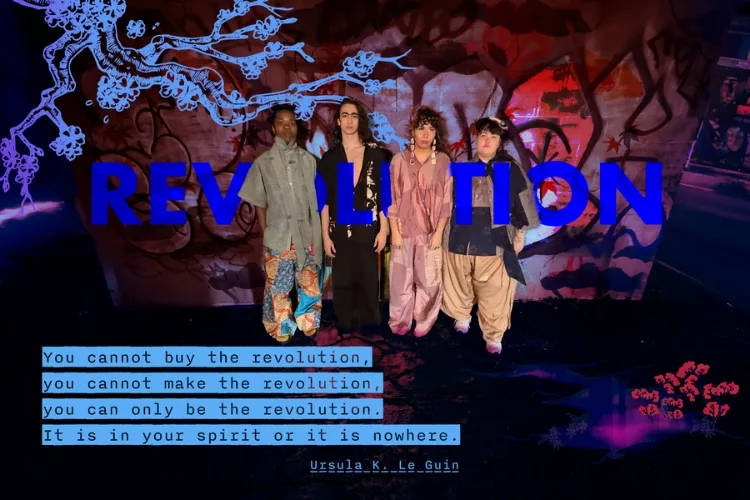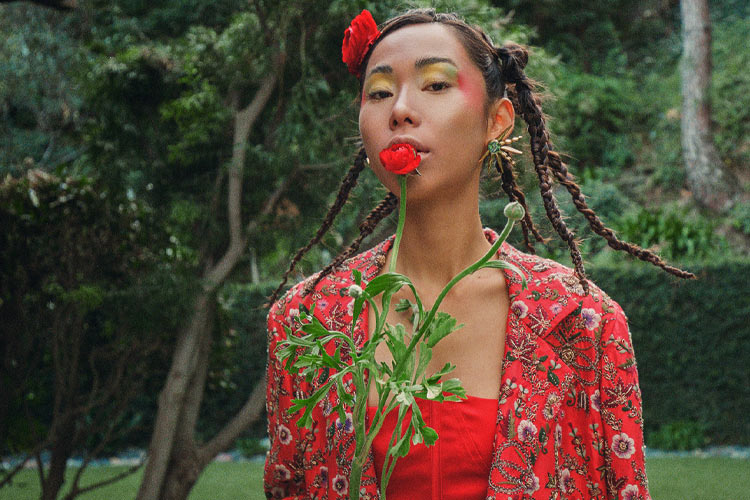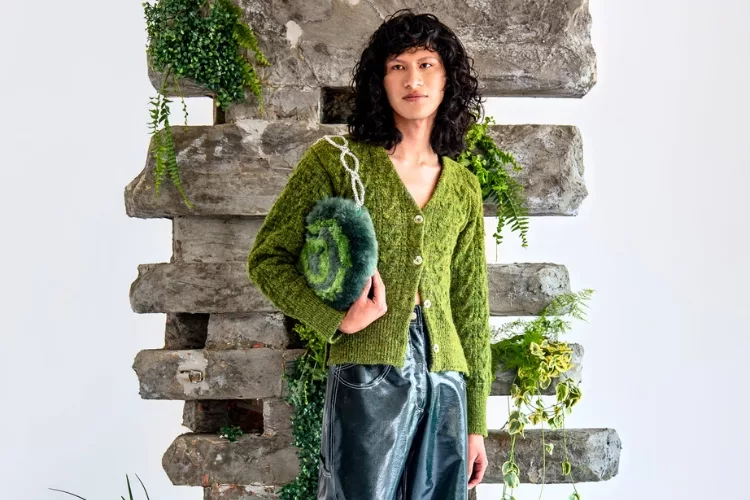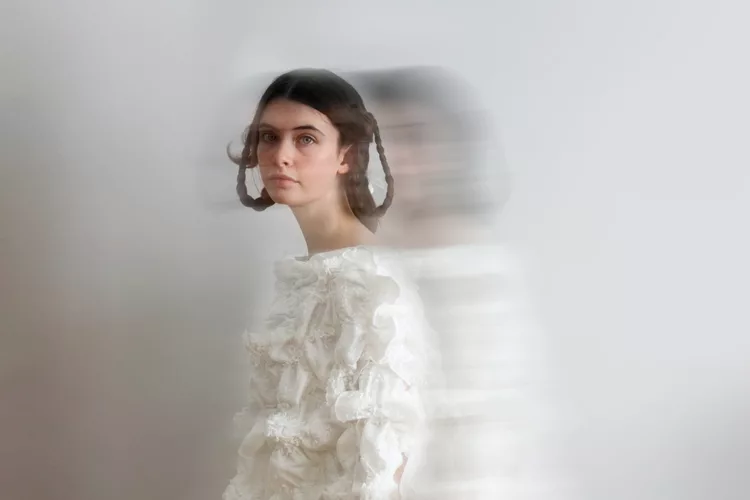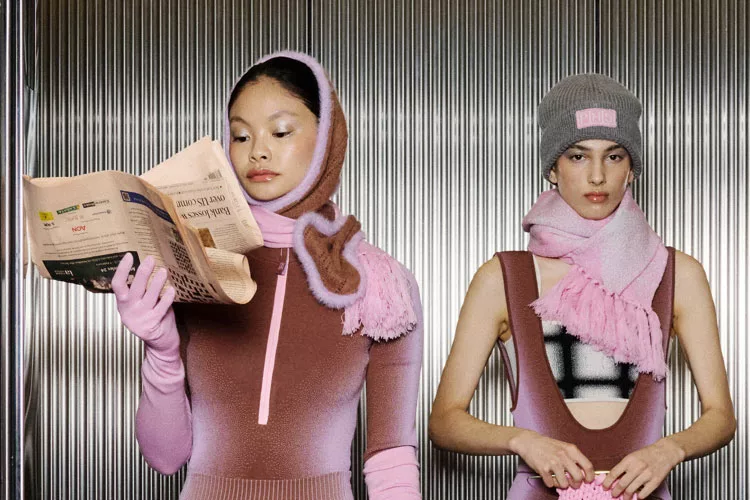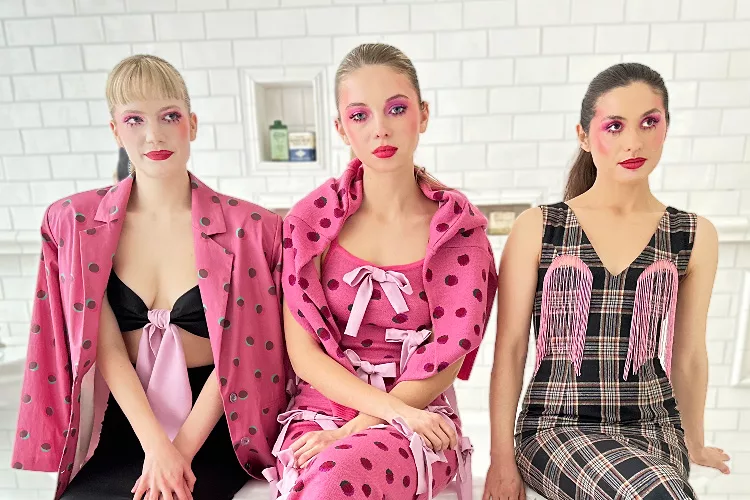you know, we have to get this right. And so, on the days that feel really hard, you look at who’s inheriting this planet from us…
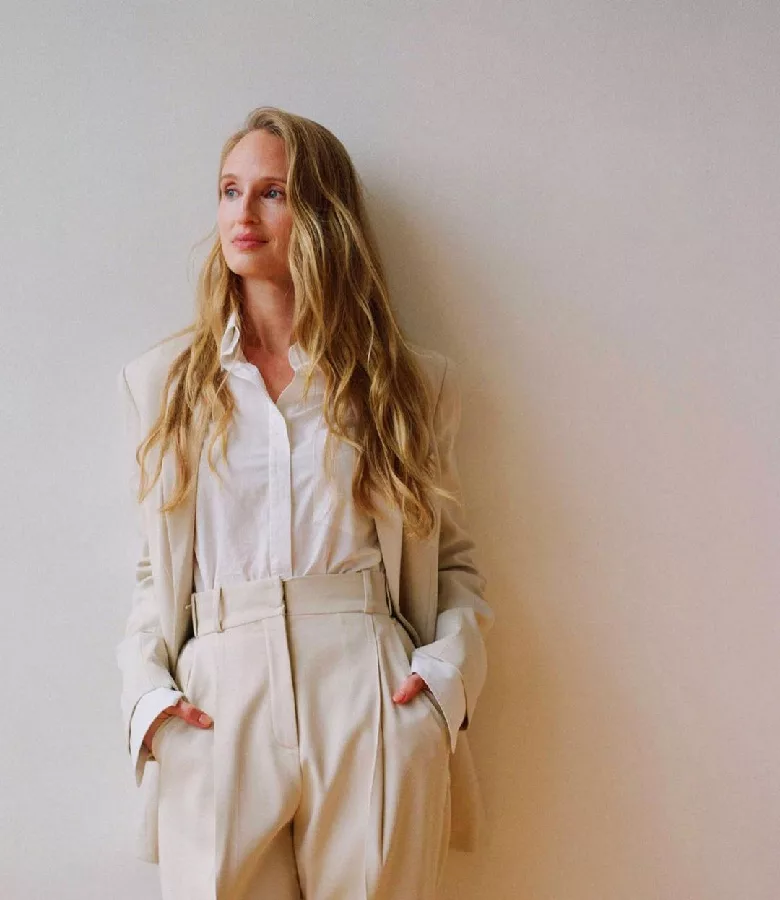
I grew up loving fashion. But when I learned about the toxic and damaging practices in the fashion industry –and not just with fast fashion– I became determined to sift through the green washing and discover which brands are actually doing better and worth supporting.
At the top of my list is Another Tomorrow. It has a sophisticated urban vibe yet it’s also the most completely sustainable brand I’ve found in the US. (Only UK based Mother of Pearl is comparable.) So I was excited to interview Founder and CEO Vanessa Barboni Hallik. From her early career in finance to the founding of the brand, we discussed how these diverse experiences and a commitment to ethics have shaped her innovative approach. Instead of “business as usual” she is building her company through the lens of systems change and creating a planet positive blueprint others might follow.
“My mission is to create a truly sustainable and compassionate company with a three-pronged approach of providing a foundational wardrobe of ethically and responsibly made clothing, education, and a platform for activism to amplify our collective voices.” –Vanessa Barboni Hallik
No Kill Mag/Katya: I was going to ask how you went from finance to fashion, but after reviewing your website again this morning, I was struck by your mission statement. Particularly the third part – a platform for activism to amplify our collective voices. This is something I’ve never seen on a fashion website. Can you please speak to this and how you think of doing this?
Vanessa: Absolutely. First, fashion is one of our most human forms of expression. And yet, it really doesn’t often match our values. There’s a fundamental disconnect there. And there’s also been such a narrative about change through spending and the idea that we’re consumers before we’re citizens.
And I wanted to flip that on its head and think about ourselves as citizens first and consumers second or third. And through doing this work, it’s struck me that fashion touches everything. It touches human welfare in the form of wages. It touches human health in terms of chemical pesticides and insecticides, you know, you name it.
And so we’ve tried to use our learnings and allow people to make their voices heard on the issues that matter. We’ve primarily done that through our petition series –that’s something that that we’re really excited about. We also try and do it with partnership to amplify that impact.
But it’s really fundamentally about being citizens versus consumers.
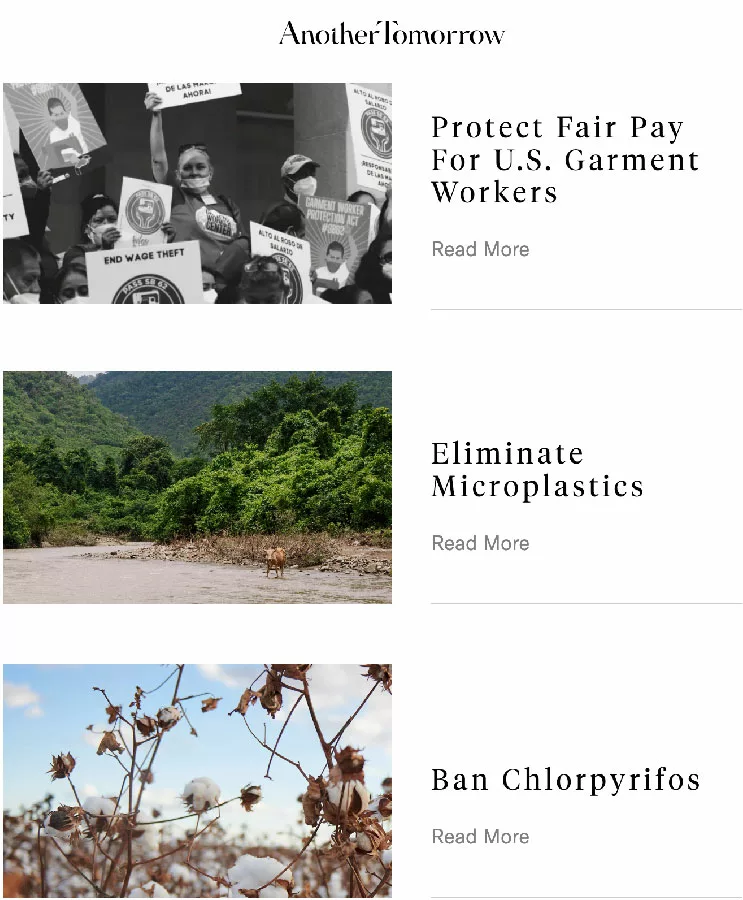
I love that. And circling back to your career path; you started out in finance. How did you go from that to Another Tomorrow? I’m kind of jumping around!
I’ll step out for a second there, too, just because I think so many seeds were sown by my parents. My dad was an academic and an early technologist. My mom was an artist and ran a cultural space and a gallery. And so this idea of problem-solving at the intersection of disciplines, mainly through innovation, sustainability, and creativity, has always been in my blood.
But no one in my family had a business bone whatsoever, you know, truly. And so finance gave me that training ground, which was amazing for business. And I had a really entrepreneurial role while I was at Morgan Stanley. And in emerging markets. So I got to understand how supply chains work and how interconnected the world is, but then apply that to this progressive hippie, techie creative background.
It became the glue that held it all together. And then all of these things have become really core ingredients in another Tomorrow.
Were your parents surprised when you went into finance considering their backgrounds?
Yeah, unfortunately, my mom passed my freshman year of college. In many respects, finance was a reaction to that. You know, I had initially thought I would be an architect. And then when she passed, I did this like subliminal 180, I think, in the direction of safety, so she probably would have been surprised.
My dad was surprised, yeah! I was the first in my family in that career capacity. And so I was definitely a fish out of water.
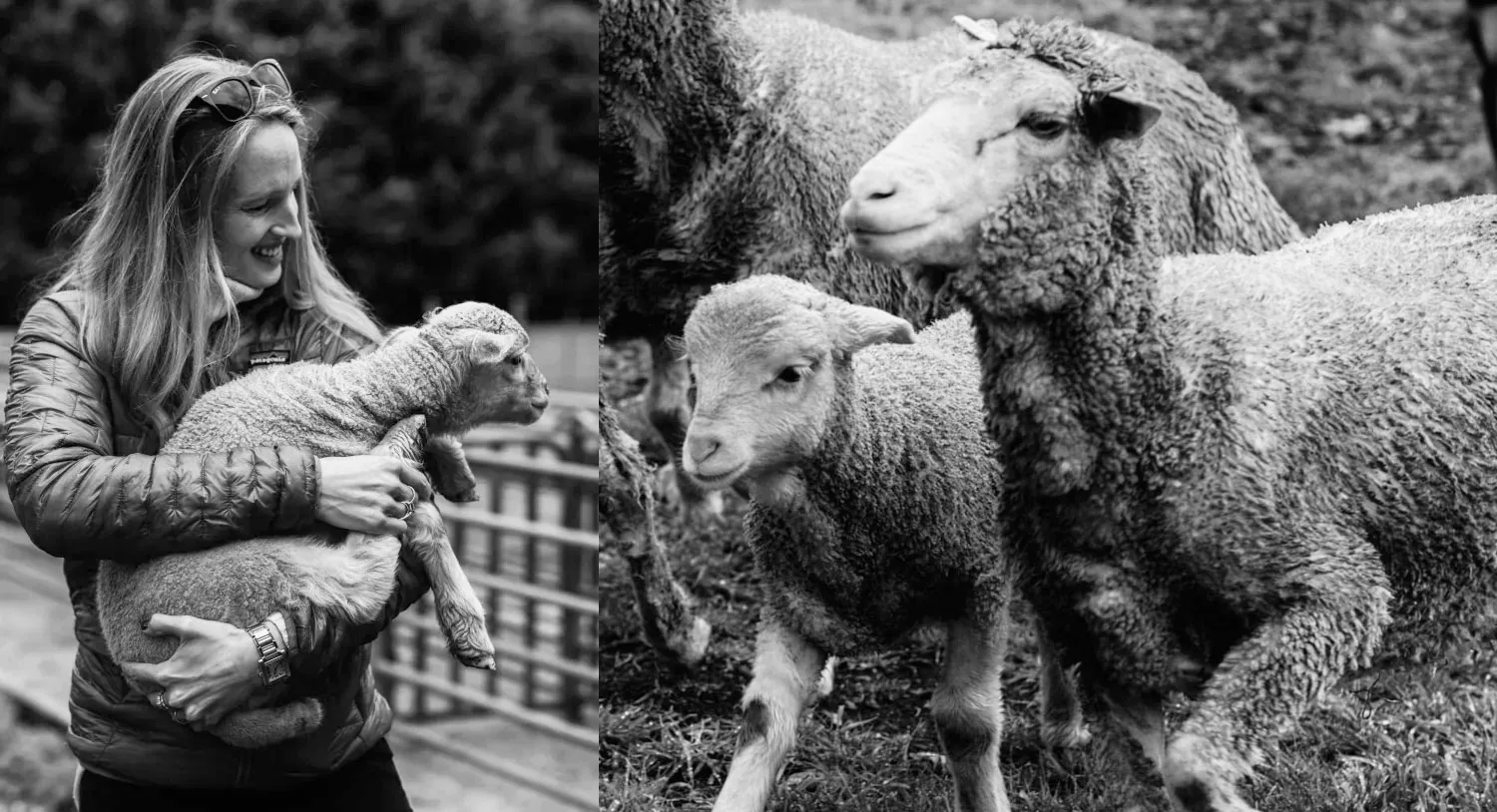
Living more holistically –and how this can be done through the lens of fashion –is a central focus of No Kill Mag and has been a constant learning process for us. And I am sure the same can be said for you! What’s surprised or challenged you along the way?
A starting point was really from the perspective of animal welfare. I mean, our view is we don’t use anything where we have to harm or kill the animal. And I was shocked at how long the list of things you cannot use is if that is your commitment. The impact on animals has been eye-opening, and we’ve been steadfast in that commitment.
And equally, the reality of how few people are paid a living wage is also quite shocking. So every day in this industry is an eye-opener. But it’s so opaque that it was amazing just recognizing the scale of the issues in the early days.
I think what’s been most interesting recently is trying to help my stepdaughter shop –she’s 12. I think it touches on something we’ll probably talk about later, which is, you know, price point and high integrity and the challenge of all that.
She wants to look cool, and she wants to feel like herself. Even knowing everything I know about this industry, outside of deeply encouraging her to buy secondhand, I’ve got relatively few options for her. And that’s so difficult for people trying to live more purposefully. And it’s been an eye-opener in terms of how much evolution there needs to be.
Yes, definitely. I was reading an article recently published by the OR Foundation, a non-profit that looks at fashion waste through a global-justice lens. They were discussing the Extended Producer Responsibility which states that a producer is responsible for a product right through to the end of it’s useful life. Like what happens to it at the end of its useful life cycle? If it’s going to end up poisoning the earth than the original maker will be held accountable…
It’s coming to a theater near you in Europe, which is really exciting. And I think that it’s the shift in those incentives that will really shift the industry.
Exactly. Another Tomorrow is already on it –no changes necessary! (laughs) But seriously I love all the information on your site, particularly about the materials. It’s just so important for consumers to learn not only what materials are better but why.
Yet synthetics, like polyester, are ubiquitous, and even high-end brands like Gucci and Balenciaga still use it. Gucci has a 100% polyester jacket for over three thousand dollars –I can’t even go there! But for Another Tomorrow, was it initially challenging for you to not use these materials, or did it change the design process? Or were you just clear in your commitments from the start?
We were super clear. And we’ve had the privilege of designing from a blank slate. It has meant we’ve had to concentrate on our materials library, but it’s been a positive design challenge. Our design and sustainability teams have come together to develop these exquisite custom fabrics that sit in that Venn diagram of our very rigorous sustainability design and quality criteria.
And then with that library–the fabrics- you design into that. So you create these kinds of exalted materials where you just have to make the absolute most exquisite best over what you can use.
And so, for us, it really hasn’t been a huge challenge. The one area that has been a challenge and a compromise has been stretch because certain products just function a heck of a lot better with a little bit of stretch capacity. And we’ve largely been able to find biodegradable versions of that. But in some technical parameters, it’s not scalable. And we’ve tried to be open and honest about where we made those compromises.
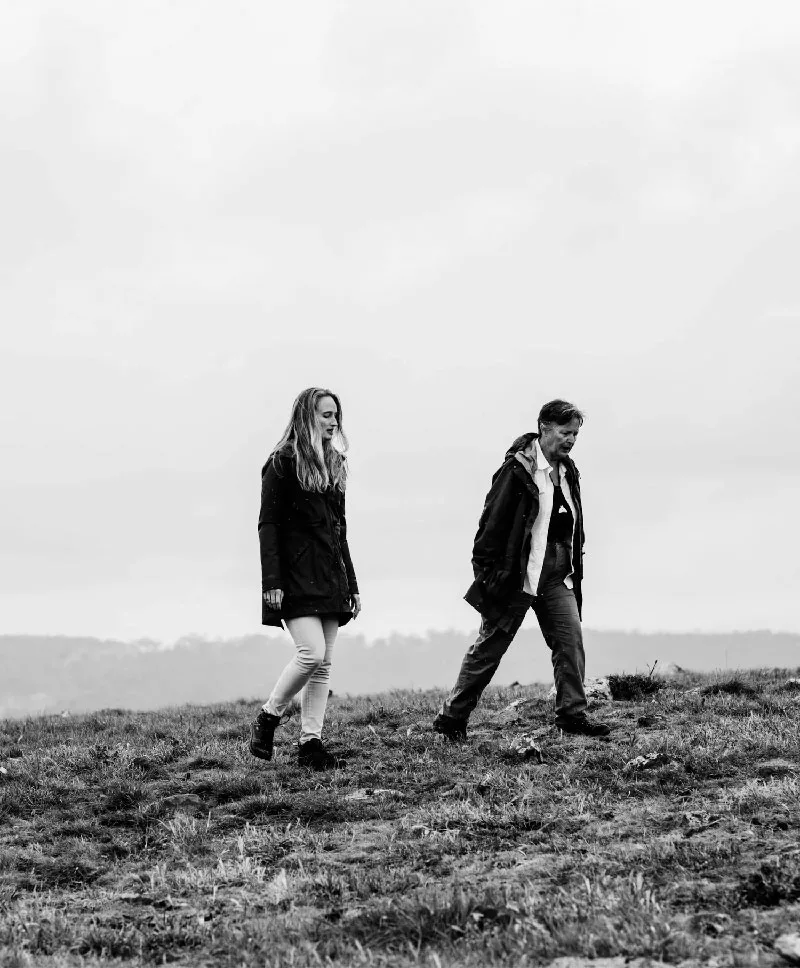
Let’s talk about the importance of supply chains and transparency. I first learned of the nightmare that is current “standard industry practices” (opaque supply chains, exploited workers) via documentaries like The True Cost.
You have approached supply chains in a much more holistic way. In fact, I read that you constructed a farm-traceable organic cotton supply chain for your denim that will support livelihoods in Uganda and organic cotton farming free of chemical pesticides and insecticides to support biodiversity.
This is amazing. How did this come about?
Well, our farm traceability started with our wool supply chain back at the beginning. And we had this very rigorous framework for decision-making. Initially, we thought we could rely upon certifications. And we’ve found that while certifications are critical baselines, they are also like minimum standards.
But then, once we started to ask questions about certifications, we couldn’t get many good answers beyond specificity. And so our farm-focused supply chain really started because of Fibershed.
They introduced us to the ethical farming community in Australia, specifically in Tasmania, where we built our first farm traceable supply chains and leveraged wool. That gave us the ability to buy the wool directly from the farm. And then, we used those learnings to scale.
We followed that up with an organic cotton farm in the States. They were able to offer us directly farm traceable organic cotton. We were able to visit some of the farms. And so this framework for farm traceability goes back to, like, the very, very beginning. Sometimes, we go directly to the farm, and sometimes we go to partners.
Returning to the price and what you mentioned earlier with your stepdaughter. The push-back we sometimes get at No Kill Mag is, “Oh, sustainable fashion is only for rich people.” Obviously, Another Tomorrow has a higher price point, although not higher than many upscale, non-sustainable brands, which I would like to point out at the very least. What do you say to people who question it?
You know, I look at it in two different ways. Number one is a lot of what we buy in the world as consumers –this will be going too far–but there is almost a modern slavery discount, right?
One Hundred percent
I think that the current level of prices implies that we are willing to make significant human welfare tradeoffs to accept that price point. And so I refuse to accept that as the baseline, as a starting point because I think there is a hidden subsidy. In particular, a human cost, but also environmental, animal welfare embedded in the current pricing structure in the industry and other industries.
So, the baseline is off to begin with. And if we look at other categories in general, clothing is one of the few that has gotten cheaper and cheaper and cheaper. With the partial exception of the last few years, during and post-COVID, for four decades. And so people used to spend more and buy less decades ago.
At the same time, I won’t sit here and say that everyone has access to Another Tomorrow. That’s just totally not true. And I deeply believe that we need scalable solutions that are far more accessible to all consumers. Until we have a really level playing field on a regulatory basis from a wage standpoint, it’s competitively really, really difficult for many brands to even contemplate that because of these negative externalities embedded in current pricing. The baselines are we also need better solutions. And regulation will be critical to leveling the playing field in that regard.
I’m cautiously optimistic about regulations as well.
Yeah, me too.
Among our readers are a lot of fashion students and young graduates. And so I’m always thinking of ways to wake them up to how crazy the whole fashion system is. I teach part-time in the graduate Communication Design program at Pratt, and something I’ll do in class is go to a site like Nordstrom and do a search for men’s t-shirts. The result, I kid you not, is along the lines of fifteen thousand results!
And so I tell my students, “Okay, just sit with that. They made over 15,000 t-shirts. And that’s not including different sizes. This is what the industry does. It overproduces. Let’s discuss why this is a problem…” and it leads to interesting conversations.
I’m always thinking about fashion production and love to contrast Nordstrom with something Another Tomorrow is doing. So I’m curious: what are you most proud of regarding Another Tomorrow, and what you have achieved so far?
We set out to be a living, breathing commercial, successful case study. And so the thing that I’m most proud of, that we as a team are most proud of, is that there are things that we’ve been able to do that others see value in and seek to emulate in their own businesses. Because I think we just wanted to prove that it’s possible [to be planet positive] and accessible to other brands in terms of process. So I’m particularly proud of that.
That’s great. Is there anything you’re not doing yet that you hope to do in the future?
We have created our authenticated resale channel, but we’re putting additional investment in technologies to really accelerate the circular economy component of our business because that’s super foundational for us. That’s something we’re working on.
And reducing the sector’s impact is one of the most critical things.
Who inspires you?
It’s primarily my kids. But I’m surrounded by people who inspire me every single day. And you know, we have to get this right. And so, on the days that feel really hard, you look at who’s inheriting this planet from us.
And that’s something that so many of us can relate to, whether we have children or not. It’s just we have to get this right. And so even when it feels impossible, you gotta go back to the drawing board, right?
Exactly! What’s your favorite Another Tomorrow item?
Right now, I love our tailoring. I wear it like my uniform. Generally a black blazer and a black T-shirt and jeans or slacks. And so I’m obsessed with our tailoring. Yeah, that’s my go-to every day. I wear a black blazer. It’s perfect.
Perfect. I’m going to have to check those out!
Related Articles



